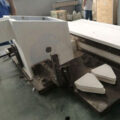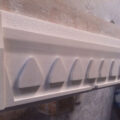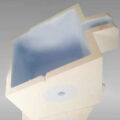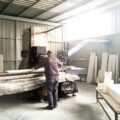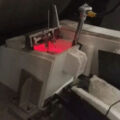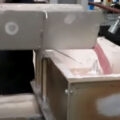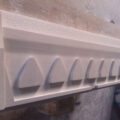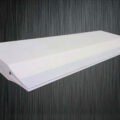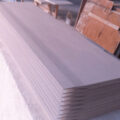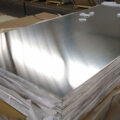The vertical slab stage is the prerequisite for the aluminum sheet normal production of casting and rolling. From the vertical slab, the influence of the adjusted casting nozzle on the flow of molten aluminum can be observed.
Vertical Slab Stage for Aluminum Sheet Production
When the liquid level of the front tank reaches a certain value, the time for the metal to flow out of the feed nozzle is roughly the same, the melt is evenly distributed when it exits the nozzle cavity, and the flow field, temperature field, and pressure field at the front edge of the casting nozzle are distributed reasonably.
After the production is finished, the inside of the mouth cavity is unloaded and observed: the metal is evenly covered in the mouth cavity, and there is no slagging phenomenon in the mouth cavity. The end face of the cast-rolled coil is of good quality, with no tower shape, no stratification, and no large edge cracks.
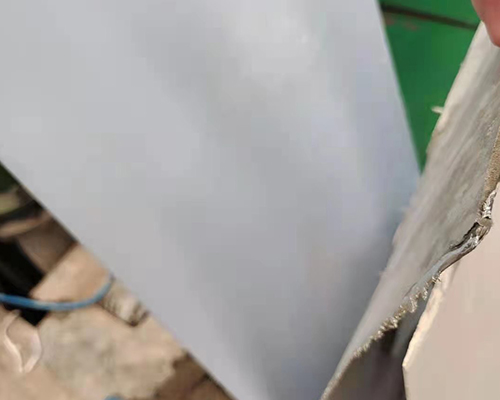
Due to the cooling and increasing speed of casting and rolling, it is bound to increase the flow of molten aluminum in the casting nozzle per unit time. Under normal circumstances, the liquid level of the front tank must be increased to ensure the liquid supply. However, because there is a certain gap between the casting nozzle and the roll, the aluminum melt depends on its surface tension at the gap to prevent it from penetrating between the gap between the nozzle and roll, so that the casting can be carried out. Under certain conditions, the surface tension of aluminum melt is certain. Therefore, the pressure of the aluminum melt in the gap is limited.
Especially as the gap between the nozzle rollers increases, the pressure decreases. In the test, in order to improve the surface quality of the cast-rolled strip, the gap between the nozzle rolls was increased by about 100 μm. Therefore, simply increasing the liquid level to ensure the full flow of the melt will cause the nozzle-roll gap to be unable to withstand the pressure of the aluminum melt, causing oxidation and folding at the slightest level, and returning to the aluminum at the heavy level, which is undesirable.
In order to increase the flow of molten aluminum in the casting tip and nozzle per unit time, by optimizing the distribution method of the casting nozzle, the distance between the side stoppers is increased by 2 mm to 3 mm, so that the metal flow at the two ends far away from the outlet is increased, strengthen the aluminum liquid supply at the edge of the casting nozzle, and increase the temperature of the metal at the edge. Reduce the distance between the intermediate stoppers by 2 mm to 3 mm to slow down the flow of the intermediate metal and reduce the temperature appropriately. And increase the supply of molten aluminum in the distribution, to ensure that the liquid aluminum is more quickly and evenly distributed in the mouth cavity under the condition of a certain front box liquid level, so that the metal temperature of the entire cross-section is uniform, and the casting is improved. The fluid pressure uniformity and temperature uniformity in the nozzle cavity can improve the flow field, temperature field and concentration field of the nozzle cavity, and reduce the internal and surface quality defects of the cast-rolled coil.


